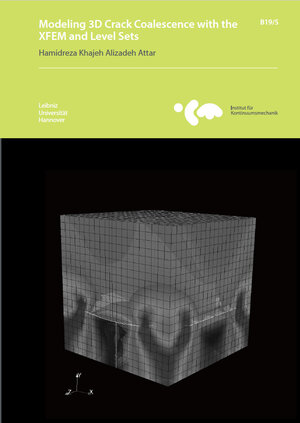
×
![Buchcover ISBN 9783941302334]()
Modeling 3D Crack Coalescence with the XFEM and Level Sets
von Hamidreza Khajeh Alizadeh Attar, herausgegeben von Peter WriggersIn many practical applications of fracture mechanics, it is not only enough to limit the analysis to a single crack in the material, but a multi-crack problem setting is needed. In multi-scale analysis of the cracks, it is common to consider the nucleation, growth, interaction, and coalescence of the micro cracks on the onset of the macro cracks propagation. XFEM (eXtended Finite Element Method) serves as a solid and efficient method for numerical crack analysis and simulation both in 2D and 3D. In this thesis, capabilities of XFEM are extended to capture and compute the coalescence of multiple cracks in 3D space. The transition from 2D to 3D and from single crack to multiple cracks burdens the formulation and its implementation with a large amount of geometrical work. Within a hybrid explicit-implicit crack surface description, in the first stage we have elaborated a crack propagation algorithm and we have captured the geometry of coalescence by pure geometrical tools. This includes the derivation and implementation of accurate calculations for intersection of geometrical primitives. In the second stage, the required numerics is developed on top of the geometry. These are realized by clear distinction of the geometrical and numerical modules. In the numerical part, the problem of integration for multiple cracks is addressed by combining the Marching Cubes (MC) algorithm with Octree sub-cell generation method. This is shown to deliver adequate accuracy with high performance. We have used the discontinuous Galerkin (DG) method successfully for mixing elements of dissimilar enrichment schemes. A crucial concern in this setting is the correct handling of the degrees of freedom. A novel general model for robust and flexible handling of the DOFs is presented and implemented. This is based on separating the concepts of nodal vs. elemental DOFs. At the end, a general formula for enrichment of the elements with multiple cracks in them is proposed. The model is tested by means of some numerical examples, and the results are presented in the final section of the thesis.


